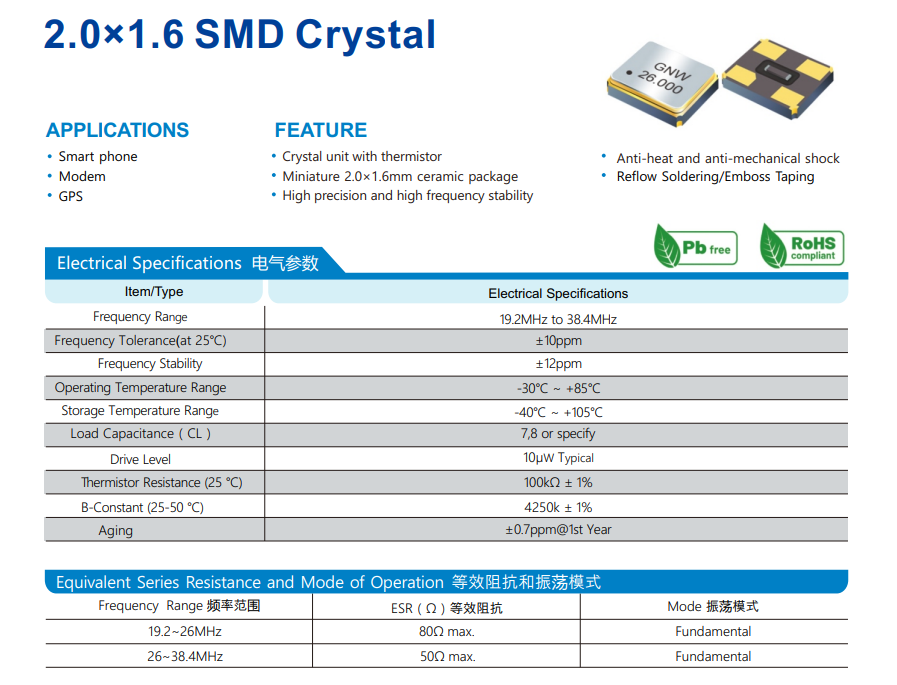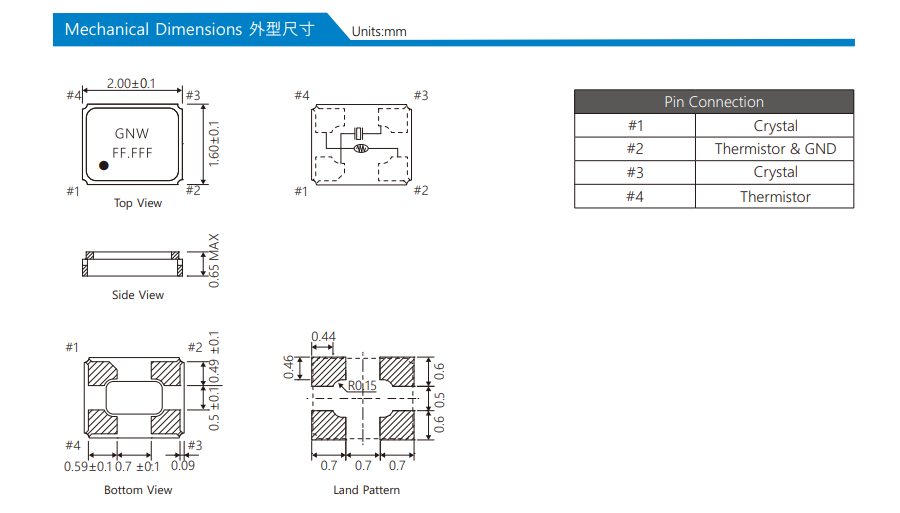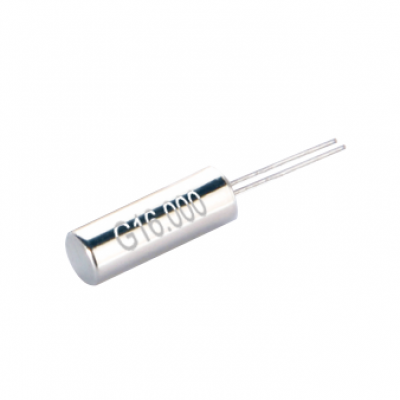
Why Thermistor Crystals?
By combining the crystal and temperature sensor in the same hermetically sealed package, you get several advantages over traditional designs that feature separate crystals and temperature sensors. Proximity of each component within the circuit gives real-time crystal temperature feedback. It also minimizes part count, saving circuit board space and simplifying circuit design. Crystals with built-in thermistors offer significantly more stable temperature performance and feature an optimized design that make them a perfect fit for many applications requiring passive electronic components.

Ultimately, a thermistor crystal’s ability to compensate for the effects of temperature on quartz crystals results in tight frequency stability and optimized circuit board design. Plus, when you order thermistor crystals from Genuway Technology, a domestic leader in the manufacturing of frequency controlling components, you’ll also get a level of reliability and durability that is unmatched in the industry.

What is a Thermistor?
A thermistor is a type of resistor that has a variable resistance depending on the temperature. In essence, they’re temperature sensors. Thermistors are made up of binders, stabilizers and sensitive semiconductor-based metal oxides; the ratios determine the component’s resistance.
While a thermistor’s primary use is as a resistive temperature sensor, it can also be connected within a series with other components or devices to control electrical current; thus, it can be used as a current-limiting device as well. Both of these uses are accomplished using one of two primary types of thermistors:
![]() Negative Temperature Coefficient (NTC thermistors)
Negative Temperature Coefficient (NTC thermistors)
This thermistors’ resistance decreases as the temperature rises. This thermistor type is most commonly used as a temperature sensor.
![]() Positive Temperature Coefficient (PTC thermistors)
Positive Temperature Coefficient (PTC thermistors)
Unlike its NTC counterpart, a PTC thermistor’s resistance increases as the temperature rises. These thermistors are typically installed in series with a circuit to protect against overcurrent conditions.







